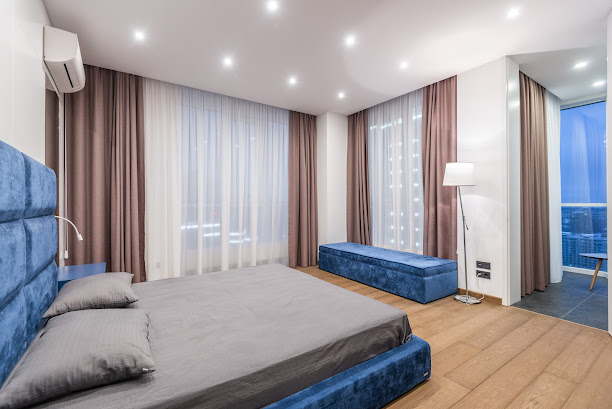Have you ever considered how different forms of lighting
alter the colour of your room? The type of lighting you choose influences your
colour scheme - for better or worse - from warm to cold hues. Don't ignore the
lighting after you've spent money on bedding, draperies, and decorations for
your bedroom. If you choose the incorrect lighting, you will destroy the
atmosphere; choose the proper lighting, and your bedroom's colour scheme will
stand out.
Cool vs. Warm
In general, "warm" light sources emphasise warm
colours like orange, red, and yellow, and "cool" lighting emphasises
cold hues like blue. Color temperature is measured in units called
"kelvin" or "K." For example, warm incandescent light bulbs
are normally around 2,700K, soft white light is around 3,000K, cool white is
around 4,100K, and daylight is around 6,500K.
Color Analysis for Your Bedroom
Before you choose lighting for your bedroom, consider its
colour palette. Is the colour scheme warm and full of earth tones, or cold and
full of brilliant hues like lime green? Once you've determined if the overall
colour temperature is warm or cold, you may select Lavior. Concealed Light for
acceptable lighting alternatives.
Lighting Options for Warm Colors
Choose a warm light with a warm or neutral hue if your
bedroom's colour plan includes warm colours and you want to emphasise those
warmer hues. Keep the colour temperature between 2,700K and 3,500K to
experience a pleasant, peaceful environment with vivid hues.
Lighting Options for Cool Colors
If the colour palette in your bedroom includes cold,
brilliant tones, try raising the colour temperature to the 4,000K to 6,000K
range. LED illumination is perfect for highlighting more bright hues. These
cooler light sources are sometimes referred to as "natural white" and
"daylight white," but avoid lighting beyond 6,000K since it may
appear excessively harsh or industrial.
Hard vs. Soft
Another factor to consider when choosing bedroom lighting
is the difference between soft and harsh light. Soft light diffuses and softens
shadows, but strong light can be purposefully employed to emphasize focal areas
or textures. Consider combining soft and harsh light, but keep the color temperature of all light sources in the bedroom consistent.
Dark vs. Bright
Consider how lighting affects colors and creates an
atmosphere. Dim lighting may create a pleasant, intimate atmosphere, but it can
also make the space appear duller than it is. In general, the more light there
is, the more vibrant the colours. Bright lighting may produce a cheerful, fun
image, but it can also wash away the colour. If you have a lot of dark colours
in your bedroom, you may require stronger lighting than usual to counteract the
light-absorbing characteristics of these deeper colours.

.jpg)
.png)

Comments
Post a Comment